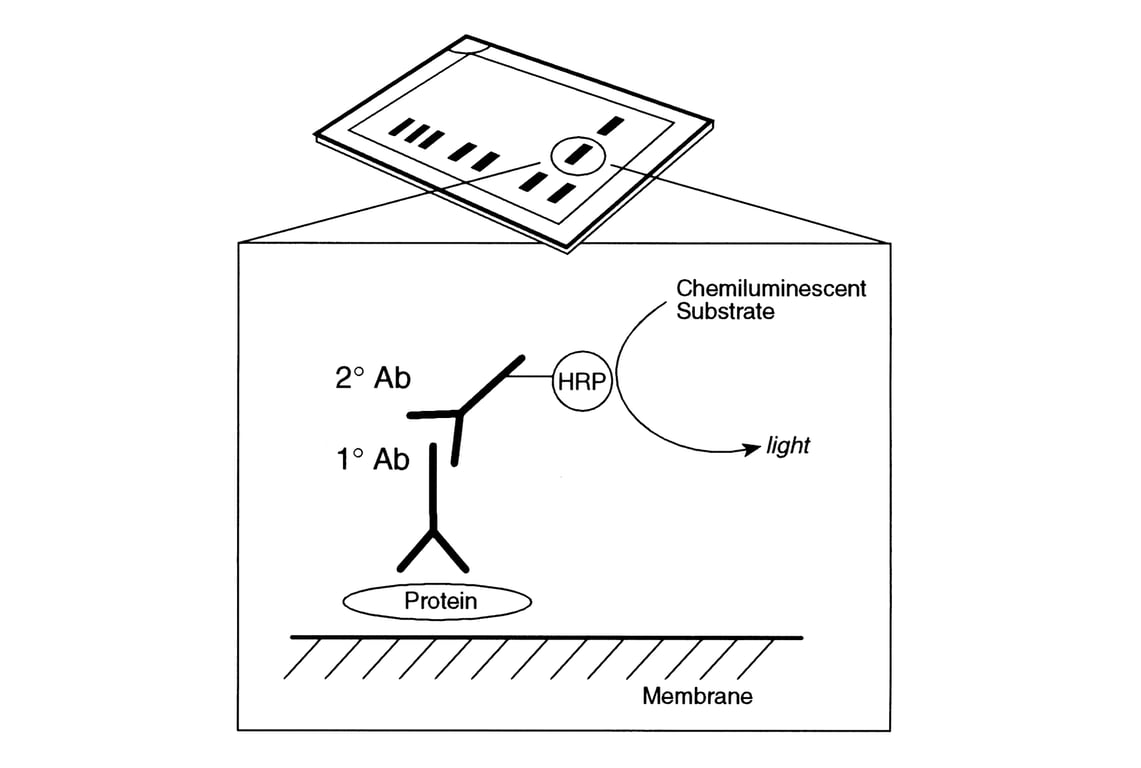20X LumiGLO® Reagent and 20X Peroxide #7003
To Purchase # 7003
| Cat. # | Size | Qty. | Price |
|---|---|---|---|
| 7003P | 10 ml 5 ml each substrate | $87 | |
| 7003S | 50 ml 25 ml each substrate | $259 |
- Product Includes
- Related Products
Kit Includes | Petite Kit (P) Quantity | Small Kit (S) Quantity |
|---|---|---|
LumiGLO® Reagent A (20X) | 1 x 5 ml | 1 x 25 ml |
Peroxide Reagent B (20X) | 1 x 5 ml | 1 x 25 ml |
Product Information
Product Usage Information
Prepare solutions with Milli-Q® or equivalently purified water.
1. Wash membrane-bound HRP (antibody conjugate) three times, for 5 minutes in TBS/T (20 mM Tris-HCl (pH 7.6),137 mM NaCl and 0.1% Tween-20)
2. Prepare substrate by diluting 20X LumiGLO® and 20X Peroxide to 1X in water (e.g. for 10 ml, add 0.5 ml LumiGLO® and 0.5 ml peroxide to 9.0 ml water).
3. Incubate substrate with membrane for 1 minute, remove excess solution (membrane remains wet), wrap in plastic and expose to X-ray film.
Storage
Product Description
Advantages of the Phototope® Western Detection System:
Sensitivity: Detection of sub-picogram amounts of protein is routine with good primary antisera.
Speed: Less than 1 hour is required for the entire detection procedure. Exposure times are seconds to minutes.
Multiple Exposures: Light is emitted at a constant rate for several minutes, so you can perform multiple exposures to optimize signal intensity. Re-exposure at a future date is achieved by simply adding more reagent.
*Avoid repeated exposure to skin (see enclosed Material Safety Data Sheet or refer to our website for further information).
Background
Alternate Names
20X LumiGLO® Reagent and 20X Peroxide; chemiluminescence; ECL; Luminol
Limited Uses
Except as otherwise expressly agreed in a writing signed by a legally authorized representative of CST, the following terms apply to Products provided by CST, its affiliates or its distributors. Any Customer's terms and conditions that are in addition to, or different from, those contained herein, unless separately accepted in writing by a legally authorized representative of CST, are rejected and are of no force or effect.
Products are labeled with For Research Use Only or a similar labeling statement and have not been approved, cleared, or licensed by the FDA or other regulatory foreign or domestic entity, for any purpose. Customer shall not use any Product for any diagnostic or therapeutic purpose, or otherwise in any manner that conflicts with its labeling statement. Products sold or licensed by CST are provided for Customer as the end-user and solely for research and development uses. Any use of Product for diagnostic, prophylactic or therapeutic purposes, or any purchase of Product for resale (alone or as a component) or other commercial purpose, requires a separate license from CST. Customer shall (a) not sell, license, loan, donate or otherwise transfer or make available any Product to any third party, whether alone or in combination with other materials, or use the Products to manufacture any commercial products, (b) not copy, modify, reverse engineer, decompile, disassemble or otherwise attempt to discover the underlying structure or technology of the Products, or use the Products for the purpose of developing any products or services that would compete with CST products or services, (c) not alter or remove from the Products any trademarks, trade names, logos, patent or copyright notices or markings, (d) use the Products solely in accordance with CST Product Terms of Sale and any applicable documentation, and (e) comply with any license, terms of service or similar agreement with respect to any third party products or services used by Customer in connection with the Products.


